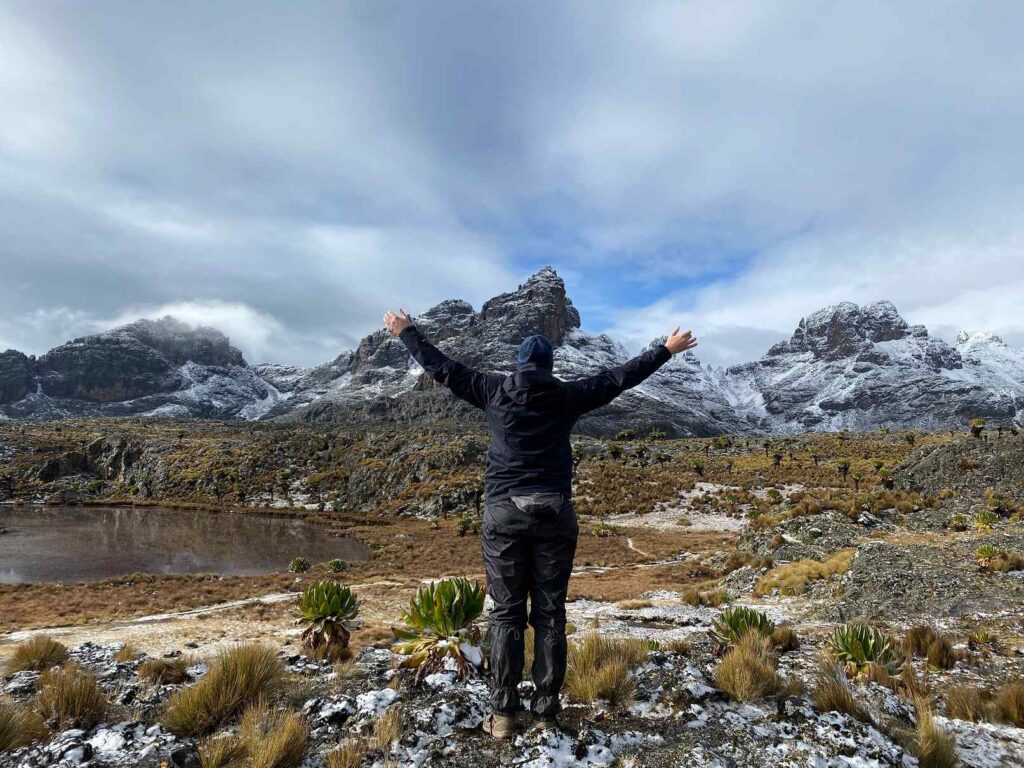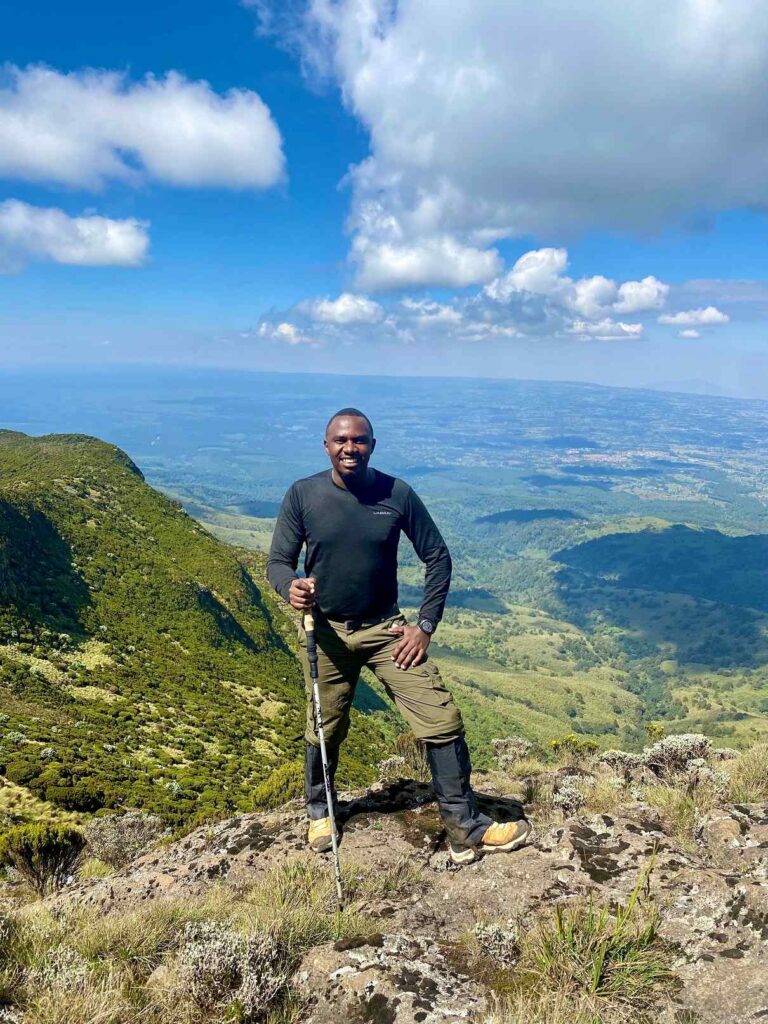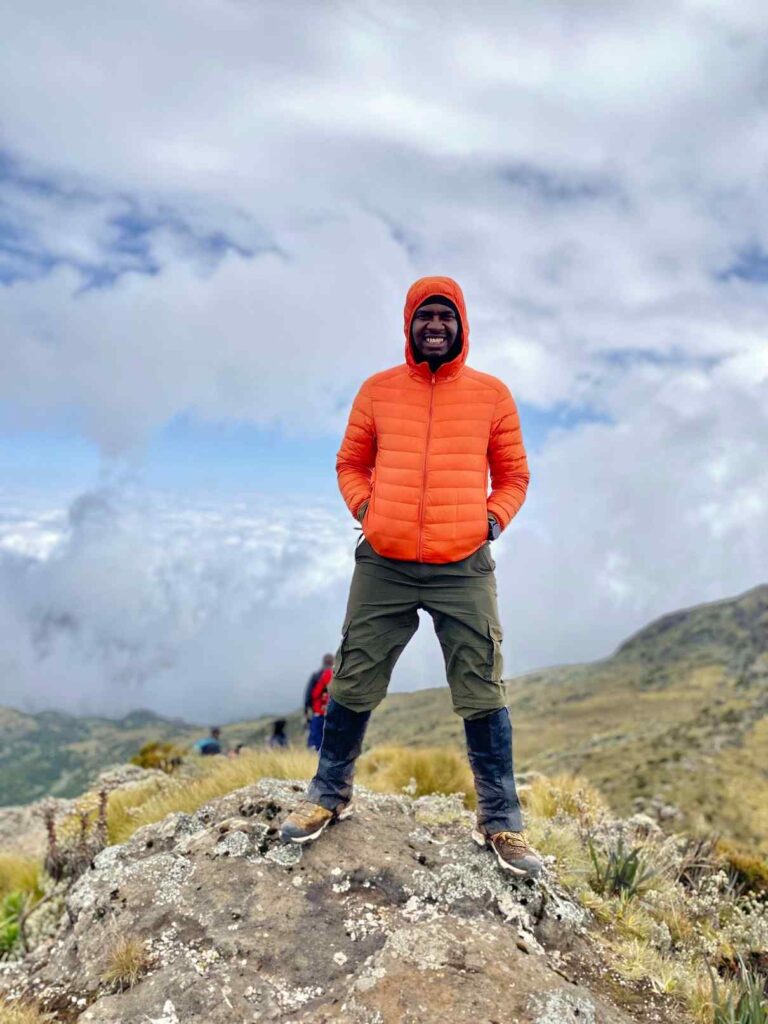You have been hiking before on low-altitude trails and are now ready to advance to high altitude hiking. Or, maybe you are a total beginner and want some insights on high-altitude hiking, as you grow in the sport. You are on the right track to keep challenging yourself and conquering obstacles in life, channeling it through high elevation hiking! As you continue reading through this post, you will gain knowledge and be able to answer the questions:
- What is high altitude hiking?
- What is altitude sickness, and what are the symptoms of mountain sickness?
- How does one prepare for high elevation hiking?
- How can you ensure safety during high-altitude hiking?

So, what is high altitude hiking?
High-altitude hiking is considered going uphill to an elevation of 4,900–11,500 feet above sea level, the same as 1,500–3,500 meters. While hiking on these high altitude trails, you get a glimpse of beautiful sunrise or sunset views—and even hike above the clouds at times. Fantastic and motivating, right? Your answer must be an emphatic ‘yes!’ And why not! Nonetheless, you must be ready to face a few challenges.
The risks of high-elevation hiking
- Unpredictable weather conditions and low oxygen concentration caused by lower atmospheric pressure at altitude are the key challenges you will likely have to deal with during high altitude hiking.
- Additionally, the sun may burn too hot during the day, and violent UV rays might harm your skin.
- In the nighttime, temperatures may drop to subzero—and expose you to the risk of hypothermia.
- Furthermore, the wind will occasionally blow at unusually high speeds, carrying debris that may get into your eyes—of course, not forgetting the cold that comes along with the wind. The less likely possibility of being blown away by violent winds is still a risk to consider just as much.
Altitude sickness
The atmospheric pressure is lower in high altitude areas compared to lower-altitude areas. Consequently, air molecules — particularly oxygen molecules — are farther apart at high elevations than at sea level. With every breath, your body takes in a fraction of the oxygen you would typically inhale at sea level. This makes breathing an uphill task during high altitude hiking.
As a result of low oxygen intake in the lungs, blood supplied to the rest of the body is less oxygenated than usual. The vital organs, such as the brain and heart, do not get enough oxygen. Therefore, altitude sickness (also called mountain sickness) is a result of the body struggling to cope with low oxygen levels in high elevation hiking before getting used to the conditions—the process that is typically known as altitude acclimatization.
Altitude sickness develops in three distinct levels, classified based on the severity of symptoms:
- Acute Mountain Sickness (AMS)
- High-Altitude Pulmonary Edema (HAPE)
- High-Altitude Cerebral Edema (HACE)
Acute mountain sickness is mostly not life-threatening. On the other hand, HAPE and HACE are both life-threatening conditions and medical emergencies during high altitude hiking.
Acute mountain sickness
Acute mountain sickness is the onset of sickness during high elevation hiking and occurs when the body does not get enough oxygen and starts to struggle to adjust. This mostly happens when you go up the mountain too fast without allowing the body to acclimate.
Acute mountain sickness symptoms are often self-diagnosable, as the brain and heart are usually the first organs to be affected by insufficient oxygen supply. Chiefly, a mild headache is common but typically goes away once the body acclimates.
The symptoms of mountain sickness are:
- Headache, dizziness, and the feeling of lightheadedness;
- Shortness of breath during activity;
- Abnormally high heart rate with little activity;
- Nausea and vomiting;
- Bloated stomach;
- Loss of appetite;
- Blocked ears or barotrauma;
- Feeling of fatigue and loss of energy;
- In the later stages of AMS, cyanosis or pale skin (bluish for fair skin tones and ash greyish for darker tones) may kick in. Paleness is commonly observed on the nails, lips, and around the eyes;
- Puffy face, fingers, toes, and other body parts.
These symptoms are easily manageable by controlling your pace and allowing your body to acclimatize. They can worsen and bring your high altitude hiking adventure to an abrupt end if ignored.
High-altitude pulmonary edema (HAPE)
HAPE is the accumulation of fluid in the lungs. It usually presents on the second or third day after the onset of progressive mountain sickness symptoms. HAPE develops from the constriction of blood vessels in the lungs, leading to increased pressure and causing fluid to leak from vessels to lung tissues. Eventually, the fluid fills the air sacs.
Crackles are the most prominent symptom of high-altitude pulmonary edema. While breathing in and out, you can hear crackling ‘krr-krr’ sounds in the chest cavity. The sound resembles sucking through a straw from a nearly empty soda bottle.
The ultimate symptom of high-altitude pulmonary edema is a productive cough with pink, frothy sputum. Breathlessness with little or no activity is yet another telltale sign of HAPE. These symptoms worsen with progression, leaving one breathless even while resting.
High-altitude cerebral edema (HACE)
An evermore life-threatening form of altitude sickness presents with the swelling of the brain with fluid. It results from fluid penetration of the blood-brain barrier. Symptoms of HACE develop within 3–5 days of progressive altitude sickness symptoms.
The symptoms of HACE include:
- Lack of coordination of movement that is not related to muscle weakness;
- Disorientation;
- Irritability;
- Acting drunk.
Ignored, HACE may rapidly progress to a coma or sudden death.
Caution: Immediate, swiftest possible evacuation must be activated at the onset of HAPE or HACE symptoms. Always procure an emergency evacuation cover ahead of high altitude hiking expeditions above 4,000m ASL.
How to prepare for high altitude hiking
The excitement of hiking above the clouds might pressure you to rush into high altitude hiking; however, gradual acclimatization can never be overstated! Altitude sickness is always lurking above the clouds, so always be wary.
Altitude Acclimatization
To avoid altitude illness while seeking the adventure and pleasure of high elevation hiking, prepare adequately. One surefire way to prepare for high altitude hiking is through altitude acclimatization.
You might be wondering: “What is altitude acclimatization?” Altitude acclimatization is the process through which our bodies adapt to lower oxygen levels in the atmosphere as we gain elevation. It can only happen if you gain elevation gradually and spend adequate time at each level of the high altitude before progressing upwards.
Another way is by exercising your body in ways that open up and increase your cardiovascular capacity. This is achieved by focusing on cardio exercises such as running, swimming, cycling, jump rope, and other heart-pumping aerobics.
Doing preparatory hikes in lower altitude trails significantly improves your preparedness for high altitude hiking. Learn how to control your pace and breathing during the preparatory hikes to avoid or delay altitude sickness as much as possible.
Psychological preparation
Unlike other hikes, high altitude hiking can be mentally torturing. You should prepare yourself not only physically but also mentally and psychologically to overcome all challenges during the hike. Once you win the battle in the mind, everything else contributes only marginally to your ability to conquer yourself.
Physical preparation
Hiking is a fun activity that should be enjoyable from the first day to the summit and back to normal elevation. To ensure this happens, you must equip yourself with the right hiking gear.
Below is a list of the must-have hiking gear for high-altitude and very high altitude hiking.
- Thermal base layer
- Quick-dry T-shirt
- Quick-dry hiking pants
- Fleece jacket
- Windproof jacket
- Waterproof jacket
- Puffer jacket
- Fleece-lined windproof pants
- Waterproof, fleece-lined gloves
- Thermo socks
- Cap or sun hat
- Windproof balaclava
- Warm hat
- Sunglasses
- Headlamp
- Waterproof hiking boots
- Leg gaiters
- If camping at elevation, sleeping bag with a subzero rating
Layering for high altitude hiking
Being equipped with the full gear without knowing how to use it must be the gravest mistake of all. Do not sweat it though; since you know which gear to get, below is how each should be layered.
During the day, you should wear a quick-dry shirt and quick-dry hiking pants or shorts. As their name suggests, they should dry quickly from sweat or sudden showers—otherwise, you risk suffering cold-related ailments when your clothes stay wet too long. Remember, should temperatures drop, you’d be facing the risk of hypothermia.

On top of the quick-dry tshirt, wear a fleece jacket or puffer jacket to keep you warm because sometimes the breeze might be too cold even when the sun is shining.
There is no debate about wearing well-treaded waterproof hiking boots in high altitude hiking because, at some point, you might be walking through a marshy trail with bogs. Waterproof boots keep your socks dry, keeping the risk of exposure to cold at bay.
Remember, there is no bad weather for hiking; only lacking the right gear for high altitude hiking is terrible. The unpredictable weather might bring rain with it. Waterproof jackets, pants, and gloves will keep your inner clothes dry even when you get rained on.
Leg gaiters cover shoes and the bottom of your pants. They keep your lower legs dry and warm and keep mud and debris out of your boots. Wearing leg gaiters saves you the hassle of getting your boots off every time to remove debris that might have gotten in. This way, you save much-needed energy.
Wearing a cap or sun hat protects your face from sunburn. Remember to apply sunscreen on your face and other exposed parts.
A hiking pole or walking stick supports you while navigating steep trails in high altitude hiking. A rule of thumb is to use the pole on your less dominant hand. This way, you, equally, support the side of the body that needs it the most. One or two poles—whichever works for you, go for it!

Protection from the elements
If hiking in a snow-covered area, wear sunglasses immediately after the sun rises to avoid the snow glare, a potentially blinding risk. When the wind blows, wear a windproof jacket and pants. Sunglasses also protect your eyes from debris.
A balaclava or neck gaiter will protect your nostrils and mouth from cold wind. Ensure the material is breathable and quick-drying so that the moisture that forms while breathing does not freeze.
While hiking, your backpack should have a water bladder with at least 2 liters. Keep hydrating because you lose a lot of water through respiration and perspiration. Never leave your headlamp while hiking at high altitudes; you never know when an incident has you late to come down or get to the next camp.
When the temperatures drop, wear a thermal base layer to insulate your skin. The material should be moisture-wicking to allow sweat to move outward to the next layer while trapping your body’s heat to keep you warm. Wear fleece-lined pants at high-elevation camps alongside the thermal base layer and fleece socks to keep warm. Also, cover your head with a warm beanie hat. This way, you are protected from the risk of hypothermia.
Safety tips for high altitude hiking
Keeping safe is the most basic task of all. It assures you of a beautiful adventure and a safe return home.
- Acclimatization – Most altitude-related issues come up as a result of not safely getting acclimatized. Take your time while going up the mountain.
- Stay alert to warning signs. The altitude sickness symptoms dictate whether you should continue hiking, rest at the current elevation, or descend and exit. Pay attention to how the symptoms appear and develop–and plan for evacuation ahead of needing it.
- Bring the right gear that ensures safety and comfort while hiking. Be sure to layer properly, as discussed before.
- Do not trust rocks even when they seem firmly attached. Use your hiking pole to navigate through them and test the stability of the rock first with your leading foot before placing your whole weight on it.
- Take action when you start feeling weird. Let those around you know when you’re not feeling well. Don’t talk yourself out of how you feel.
- Hike high but sleep low. A good practice is to sleep no higher than 1500 feet above your last overnight elevation. While at it, climb to a higher elevation and descend to sleep at a lower elevation. This way, your highest elevation of the day is not the final elevation.
- Due to the high risk of getting acute mountain sickness and unpredictable severity, always have an emergency evacuation cover on standby.
- Hydrate every so often to prevent dehydration, since you sweat a lot while hiking. Remember: if you feel thirsty, you are already dehydrated. Take small sips frequently instead of large gulps after a while.
Hiking in high altitude trails is one of the best decisions you can make. You get to see priceless stunning views and create a one-of-a-kind lifetime memory. However, be sure to scan through high altitude hiking risks, gear, and how to be well-prepared for high altitude hiking. Go forth and enjoy being in the league of the few who get to live above the clouds. High altitude hiking is fun. Do it safely with these tips! All the best.
4 Comments
Ms. Kibe · November 14, 2022 at 6:20 pm
This is a very great breakdown of information that would really help a lot of beginners and new potential adventurers on the trails! Good job.
Robert · November 14, 2022 at 6:28 pm
I’m glad you found it helpful. Feel free to share.
Francesca · November 15, 2022 at 3:20 am
Thanks Robert. Very useful. I feel can add how important cardio exercise is as part of the preparation.
Robert · November 15, 2022 at 6:49 am
Oh, yes. Cardio exercises improve the cardiovascular endurance—a much-needed strength to help with altitude acclimatization.